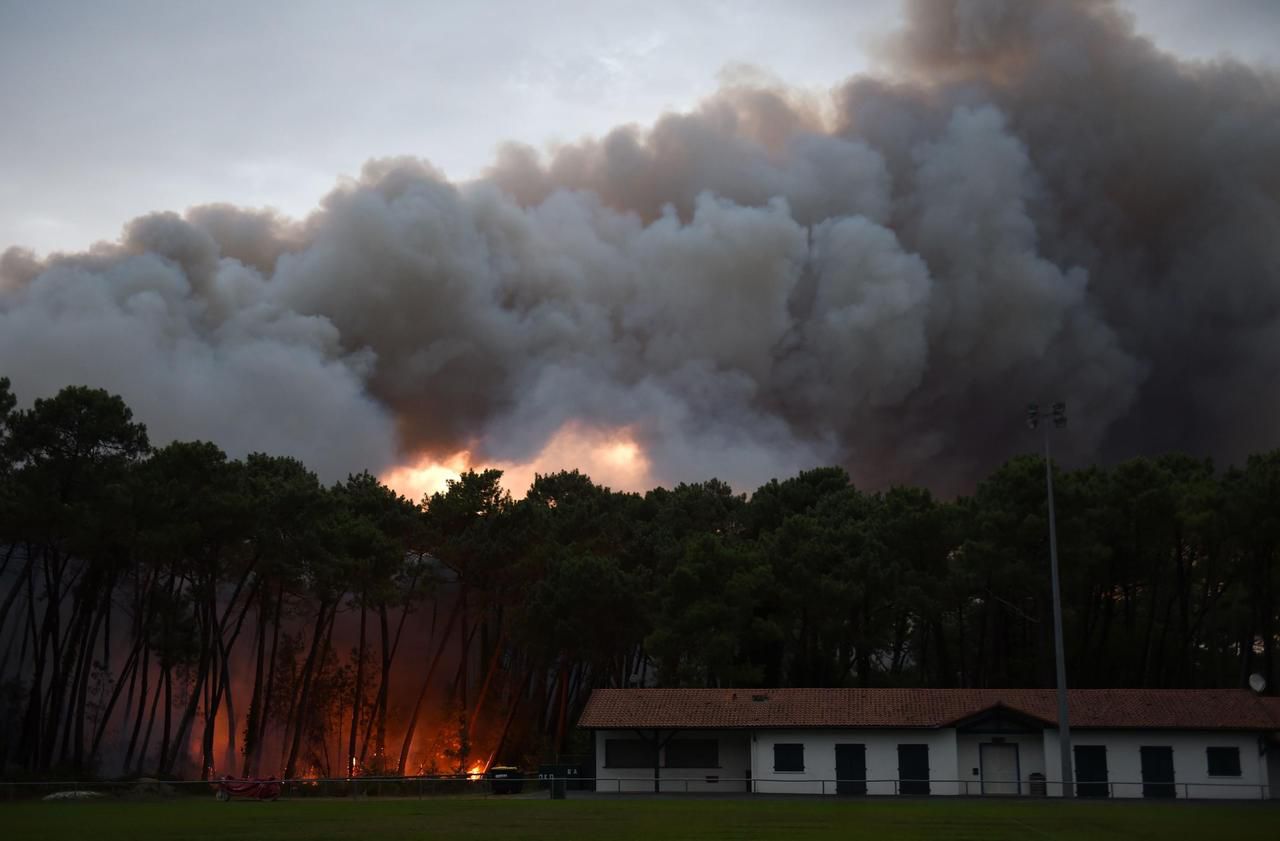The children practiced tree climbing there; joggers jogged there; it was the meeting place of families and lovers strolling under the foliage hand in hand ... between the Adour river and the Atlantic, in the center of Anglet, the large pine forest of Chiberta was the favorite green island of the inhabitants from the seaside resort of Pyrénées-Atlantiques. "It hurts so much in the heart because I made dozens of picnics there since my childhood and I did not imagine that a fire could devastate this so beautiful forest", sighs Karine who lives a few kilometers from the natural Park.
165 ha of vegetation were reduced to ashes there after the spectacular fire that took place late Thursday afternoon and brought under control overnight by firefighters. Fueled by drought and scorching heat (it was nearly 42 ° C in the Basque Country on Thursday), the fire was stoked by the wind. Dozens of people have been forced to leave their homes urgently.
VIDEO. Fire ravages the Anglet forest
If one is lapped every summer at the parade of Canadairs flying over the Corsican maquis, the Var hinterland or the pine forests in Gironde, seeing water bombers intervening in the heart of a city is quite rare. But perhaps we will have to get used to it as the risks of heatwaves and extreme drought are likely to multiply in the future, if we are to believe the projections of climatologists from the IPCC (Intergovernmental Panel on climate change).
"The number of days marked by an extreme risk of fire could increase by at least 30% by 2050", underlines Jean-Baptiste Filippi, researcher at CNRS and coordinator of the FireCaster research program, a pre-operational tool for 'fire decision support.
Areas so far spared
These increased risks of fires will no longer only concern isolated forests but wooded areas located near towns. “Because the cities have moved closer to the forests,” points out Jean-Baptiste Filippi. We build houses in the bush, we develop adventure trails in the woods, we set up campsites under the pine forest… ”This threat, the National Forestry Office (ONF) has integrated it well and is now worried about seeing fires start to occur in areas so far spared, in the north of the country.
"Today, more than three quarters of the surfaces destroyed by forest fires are located in the great South," explains on the ONF website Yvon Duché, national technical manager for forest fires. The IPCC climate change scenarios available to us show a tendency to extend the risk first to the south-west, then to Brittany, the Loire Valley, the Paris region and the upper Rhône valley, before to concern in a second time, towards the end of the century, almost all the national territory. "
Newsletter - Most of the news
Every morning, the news seen by Le ParisienI'm registering
Your email address is collected by Le Parisien to enable you to receive our news and commercial offers. Learn more
At the gates of Paris, more than eleven million people visit the 22,000 ha of the Fontainebleau forest each year. And the forestry officers redouble their vigilance there in summer. They now use drones to monitor the massif, which is subjected to around forty fires each year. To meet the firefighters' water needs, three tanks of 30 cubic meters each have been semi-buried in the forest and a pumping project in the Loing aqueduct is under development.
Thermal shields
"In the Grand-Est region, the fire and rescue services are also adapting to the risks of fire that would occur in the forests of the Vosges and the concern is similar in the Morvan massif", explains Jean-Baptiste Filippi. Beyond the dangers that these fires pose to local populations and their impact on the flora and fauna, when hundreds of hectares of forests go up in smoke, the warming is accentuated.
“During heat waves and heat waves, trees act as heat shields,” explains Jonathan Lenoir, researcher in forest ecology at the CNRS. This is why the concept of “urban forests”, providing freshness and greenery, appeals so much to city councilors in large cities.
"If these high temperatures are repeated over time, the trees will no longer be able to draw water from deep in the ground, will tend to die and could therefore constitute in the long term potential fuels for future fires," warns the scientist. In the forest of Compiègne (Oise) for example, we can already see that many beeches are wasting away because of the forest chafer which nibbles their roots and an accumulation of prolonged periods of drought in summer. A vicious circle which could contribute in the future to accentuate the risk of fire in the heart of this massif.

